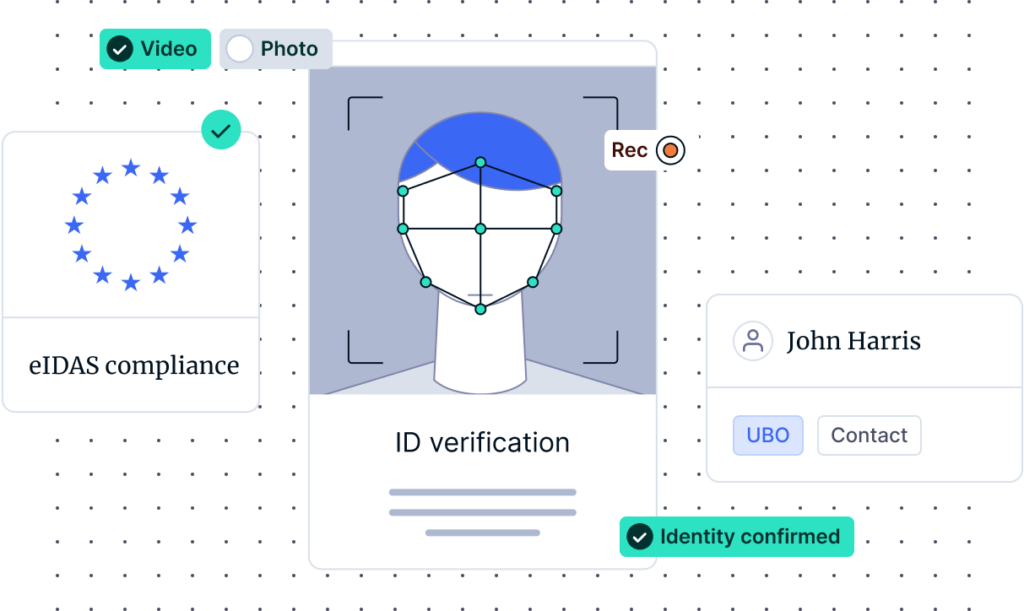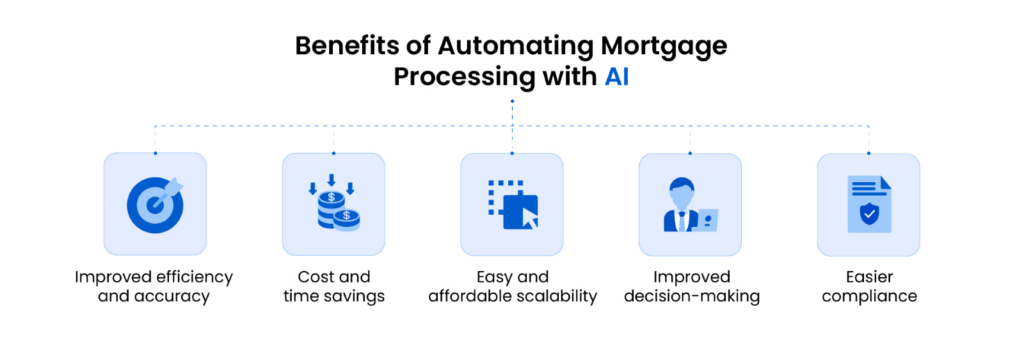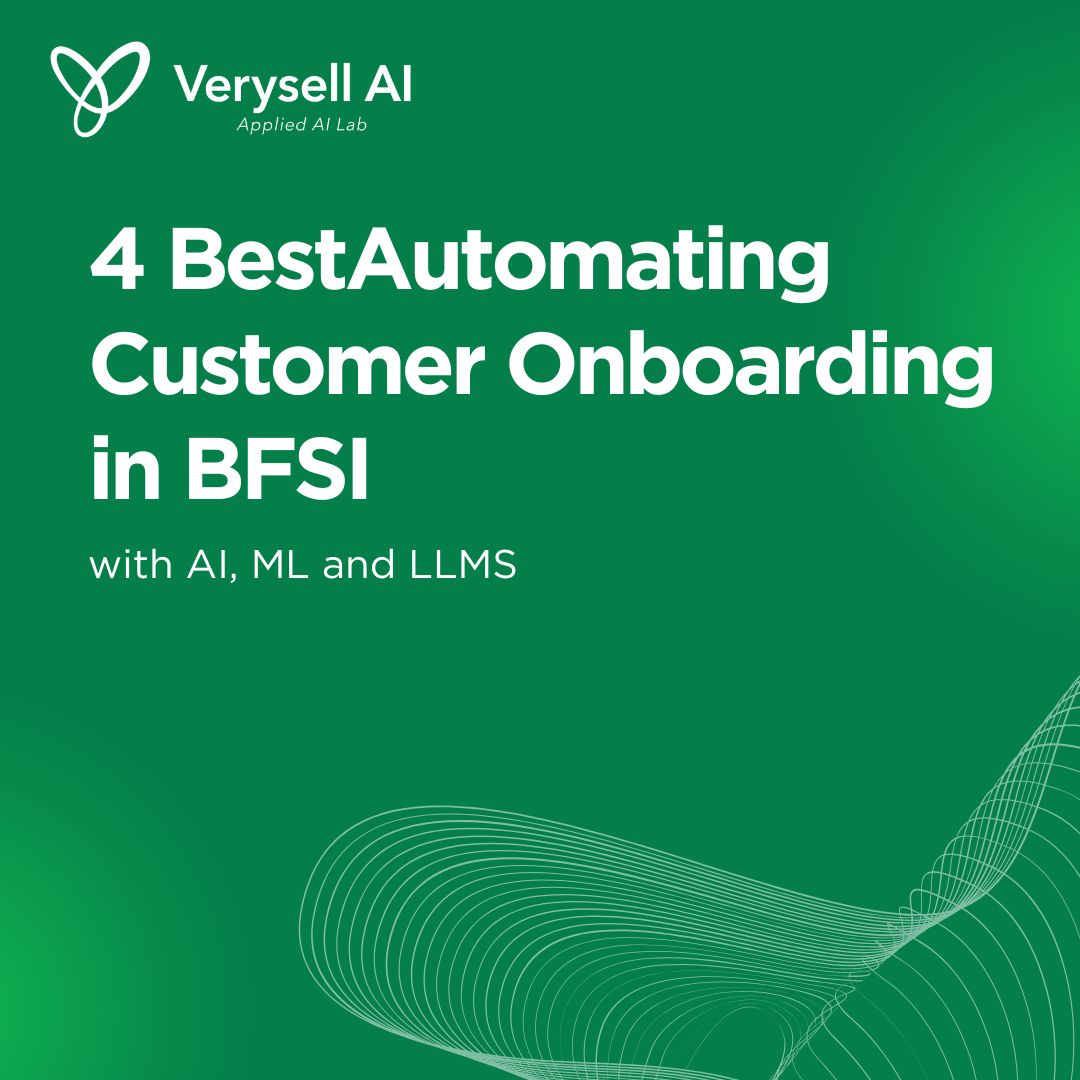Customer onboarding in BFSI (banking, financial services, and insurance) is one of the most critical touchpoints in this sector. It’s the first direct interaction a customer has with a service provider, and how smoothly or efficiently it goes can influence their overall experience and loyalty. As expectations evolve and competition intensifies, financial institutions are increasingly leveraging advanced technologies like Artificial Intelligence (AI), Machine Learning (ML), and Large Language Models (LLMs) to enhance and streamline the onboarding process.

Top 4 importance of customer onboarding in the BFSI are seamless communication, streamlined process, insight dashboard, and data security.
Firstly, effective onboarding ensures clear and consistent communication with customers. This builds trust and helps customers understand the services provided, reducing confusion and enhancing overall satisfaction.
Secondly, a well-structured onboarding process minimizes delays and simplifies the experience for customers. Automation and AI can help expedite documentation and verification, making it easier for customers to start using services quickly.
Next, an insight dashboard provides both customers and service providers with valuable analytics. It allows businesses to track onboarding metrics, customer behavior, and engagement levels, enabling data-driven decisions to enhance the onboarding experience.
Finally, ensuring robust data security during onboarding is crucial in the BFSI sector. Implementing strong security measures protects sensitive customer information and helps to comply with regulatory requirements, thereby fostering customer confidence and loyalty.
The traditional onboarding process in BFSI
Historically, customer onboarding in the BFSI sector has been a complicated, lengthy, and often tedious process. Customers needed to complete extensive forms, provide various documents (such as proof of identity, address, and income), and sometimes visit physical branches. Financial institutions were tasked with manually verifying these documents, assessing risk, and ensuring compliance with regulations like Know Your Customer (KYC) and Anti-Money Laundering (AML).
This onboarding process could take days or even weeks, leading many customers to abandon it due to long wait times or frustration with its complexity. For institutions, the manual workload was resource-intensive and susceptible to human error, increasing the risk of regulatory non-compliance and potential fraud detection failures.
>> Read more: Fraud detection and prevention in BFSI
How AI and ML are transforming customer onboarding
AI and machine learning (ML) are revolutionizing how BFSI institutions handle customer onboarding by introducing automation, efficiency, and intelligence, which are essential for enhancing the customer experience.
1. Faster Identity Verification
Previously, verifying a customer’s identity required extensive checks across multiple databases, documents, and sometimes in-person meetings. Now, AI-driven facial recognition and biometric authentication technologies enable customers to verify their identities quickly and securely using smartphones or computers. Machine learning models can analyze facial features or voice patterns, comparing them in real time to government-issued IDs or other databases. This significantly shortens the onboarding process while reducing fraud risk through improved accuracy and the elimination of human error.

2. Automating Document Verification
Document verification is a vital component, but manually reviewing documents like passports, utility bills, and tax returns is labor-intensive. AI and ML can streamline this process using optical character recognition to read and extract relevant information from scanned or photographed documents. ML algorithms can then verify the authenticity of this data by cross-referencing it with other sources to detect potential fraud. This automation not only accelerates the process but also enhances accuracy and ensures compliance with regulatory standards.

3. Personalized Onboarding Journey
AI can improve personalization throughout the onboarding experience. By analyzing customer data—such as past interactions, preferences, and behaviors—AI models can customize the onboarding process for each individual. For instance, if a customer is applying for automating mortgage, the AI can provide a tailored list of required documents and information, making the experience more efficient with five benefits: improving efficiency and accuracy; cost and time savings; easy and affordable scalability, improved decision-making and easier compliance.

This personalization also extends to communication, with AI-driven chatbots and virtual assistants utilizing natural language processing (NLP) to guide customers, answer questions in real time, and offer immediate feedback. This approach results in a smoother, less frustrating experience for customers while allowing human agents to focus on more complex inquiries.
4. Enhanced Risk Assessment and Fraud Prevention
Ensuring compliance with KYC and AML regulations is crucial during customer onboarding, which involves evaluating each customer’s risk. Traditional risk assessment methods often rely on static rules or manual reviews, making them slow and prone to errors. In contrast, machine learning models can analyze vast amounts of data from various sources to evaluate customer risk in real time. These models can identify subtle patterns or anomalies that human analysts might miss, allowing for quicker and more accurate risk assessments.
Additionally, AI can detect potentially fraudulent activities during onboarding, such as suspicious account behavior or inconsistent documents, flagging them for further investigation. This significantly reduces the risk of onboarding fraudulent customers or facilitating money laundering.
Large language models (LLMs) and their role
Large Language Models (LLMs), such as OpenAI’s GPT, have introduced a new dimension of intelligence to customer onboarding processes, particularly in customer interactions, document handling, and decision-making.
1. Customer Support and Chatbots
LLMs are highly effective at processing and understanding natural language, making them essential in customer service. AI-powered chatbots and virtual assistants utilizing LLMs can address a wide range of customer inquiries during onboarding, from assisting with form completion to clarifying complex financial terms.

These models can communicate in a human-like manner, enhancing engagement and making the onboarding experience feel more intuitive rather than purely transactional. Additionally, these chatbots can manage multilingual inquiries, providing a more inclusive onboarding experience for customers from various regions and language backgrounds.
2. Dynamic Form Filling and Data Extraction
LLMs can facilitate auto-filling of forms using customer input, extracting relevant information from documents, emails, or prior interactions. This minimizes the risk of human error and relieves customers from repetitive data entry tasks. By analyzing documents, contracts, or policy terms, LLMs can identify and extract crucial information, ensuring that nothing is overlooked during the onboarding process.

3. Compliance and Regulation Monitoring
LLMs can be trained in regulatory materials, including current financial laws, KYC requirements, and anti-money laundering (AML) guidelines. This capability enables financial institutions to remain up to date with regulatory changes, ensuring that their onboarding processes comply with existing laws. This adaptability in monitoring regulatory updates helps organizations avoid costly fines or penalties.

Conclusion:
Thanks to AI, ML, and LLMs, customer onboarding in the BFSI sector is undergoing a significant transformation. By automating routine tasks, enhancing security, personalizing the experience, and ensuring compliance, these technologies are streamlining the onboarding process, making it faster, more secure, more friendly. Contact us to explore more AI services!


